Nick Farr’s first time in Black Rock City kicked off a series of important lessons. “I found out what a darkwad was when the batteries on my headlamp faded out and died in deep playa. That’s when I started bringing out the biggest possible pack of batteries you could buy on every future trip out to BRC.”
When he joined Burners Without Borders to help with their solar array, Farr thought about the extra weight and waste of those batteries. He brought rechargeables, and a two-slot battery charger. “Every time I came back, people were charging their own batteries on it.”
The next year, Farr upped his game: “I bought a large rechargeable battery charger and a big pack of rechargeable batteries — making portable renewable power my gift.”
Harnessing Our Collective Ingenuity to Solve Complex Challenges
The very experience of bringing a camp, an art project, or just ourselves to Black Rock City means thinking iteratively about everything we consume — from water, to power, to the waste we pack out.
We’re grateful to the teams, camps, and villages — such as Earth Guardians and Alternative Energy Zone (AEZ) — that have spent years greening Black Rock City and its surrounding ecosystems.
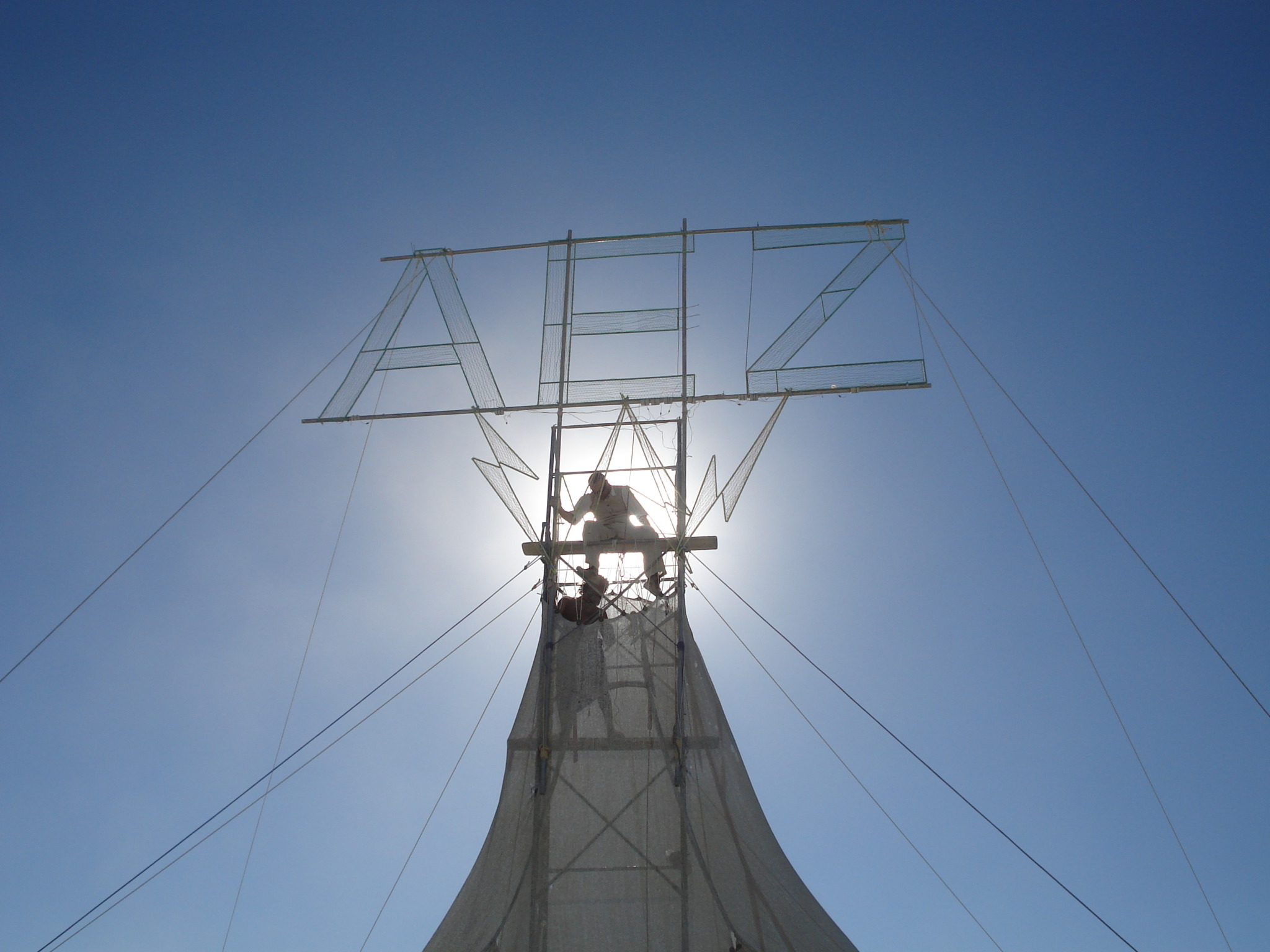
Black Rock City has a long way to go before it becomes a city with a low carbon footprint, let alone a temporary city that is regenerative and carbon negative. Every year, tens of thousands of participants burn fossil fuels to arrive by car and plane. Many buy mass-produced goods they use for only one week, generate trash, and use generators to power camps and projects.
As the organization that builds and manages Black Rock City’s infrastructure, we contribute to the city’s carbon footprint by burning fossil fuels for transportation, running diesel generators, and producing trash that ends up in landfills.
It will take everyone — from project and camp leads, to individual Burners, to Burning Man staff — to lessen our city’s impact on the environment.
In this post, we’ve shared what we’re doing as an organization to make our activities more environmentally sustainable in 2022. We’ve also outlined many things you can do now to green your camp, your art, and your Burning Man journey.
What We’re Doing
We’ve spent the last two years since publishing our ambitious 2030 Sustainability Roadmap advancing projects aimed at lessening the environmental impact of our long-awaited return to Black Rock City. Here’s what Burning Man Project is doing to align Black Rock City with our long term environmental sustainability goals:
The 2030 Sustainability Roadmap
In 2019 we released our 10-year Environmental Sustainability Roadmap, which outlines concrete steps we can take as an organization to meet three ambitious goals by 2030:
- No Matter Out of Place. Handle waste ecologically.
- Be Regenerative. Create a net positive ecological and environmental impact.
- Be Carbon Negative. Remove more carbon from the environment than we put into it.
The Burning Man Project Sustainability team (sTeam) tracks and guides work towards these three goals. Our Year Two Progress on 2030 Sustainability Goals report shares accomplishments to date, and outlines challenges ahead.
Watch the Year Two Sustainability Update to follow a community conversation about our progress.
Carbon Emissions Inventory
In 2021, Burning Man Project conducted a detailed emissions inventory to establish a baseline for Black Rock City’s carbon negative goal. We included staff and participant travel to and from the event, as well as the builds, projects, and activities in Black Rock City; this added up to a total of more than 54,000 metric tons of CO2.
Incentives for Burners who Prioritize Sustainability
We’ve put mechanisms in place to support Burners who make sustainability a priority. As part of the camp placement process, we’ll be reviewing camps’ commitment to sustainability projects, such as minimizing power draw, sharing resources, and implementing renewable technology. We’re dedicating several thousand tickets to support work in important areas of environmental sustainability and community diversification (including R.I.D.E., under-represented art forms, international inclusion, etc.).
Taking Black Rock City Off Fossil Fuels (OFF)
In 2022, our goal is to reduce city infrastructure liquid fuel consumption by 10%. This is ambitious, but we have a mighty plan that includes upgrading to electric equipment and shifting away from gas and diesel generators to solar power and battery technologies.
In the summer of 2020, we created a volunteer team called Black Rock Power to begin implementing solar infrastructure. From then to now, we have deployed solar technology to power summer programs and camping trips at Fly Ranch, our 3,800 acre ranch in Northern Nevada, and the 360, a parcel of land we own and are developing outside Gerlach (more on that below).
Now this program has matured, and we have hired our first year-round solar team led by Matthew ‘Starchild’ Deluge. Its goal is to make significant progress getting Black Rock City off of fossil fuels utilizing solar energy technology.
This year in Black Rock City, parts of the Department of Public Works infrastructure and some beta testing theme camps will be powered by solar. Year over year, you’ll start to see more solar units, high capacity batteries charged from a fixed solar array on the 360, and fewer diesel generators in Black Rock City. This is coming about thanks to a growing menagerie of solar units: photovoltaic solar trailers, rapidly deployable solar shade structures, and ultimately a utility scale fixed solar array that is currently in design. We hope implementation of these new solar units will inspire adoption of solar power among camps and art crews, and at other events and communities around the world.
Powering the Man With Solar
We’re thrilled to announce that the Man will be 100% powered by solar in 2022 and beyond. Money raised from our Playa Restoration Manager DA’s 2020 MOOPathon kicked off the funding for this great project. We’re planning to use mid-sized solar systems to make “solar-powered Man” a reality. The Black Rock Power team, under Starchild, has designed a custom solar generator and will begin construction on the 360 property in just a few weeks.
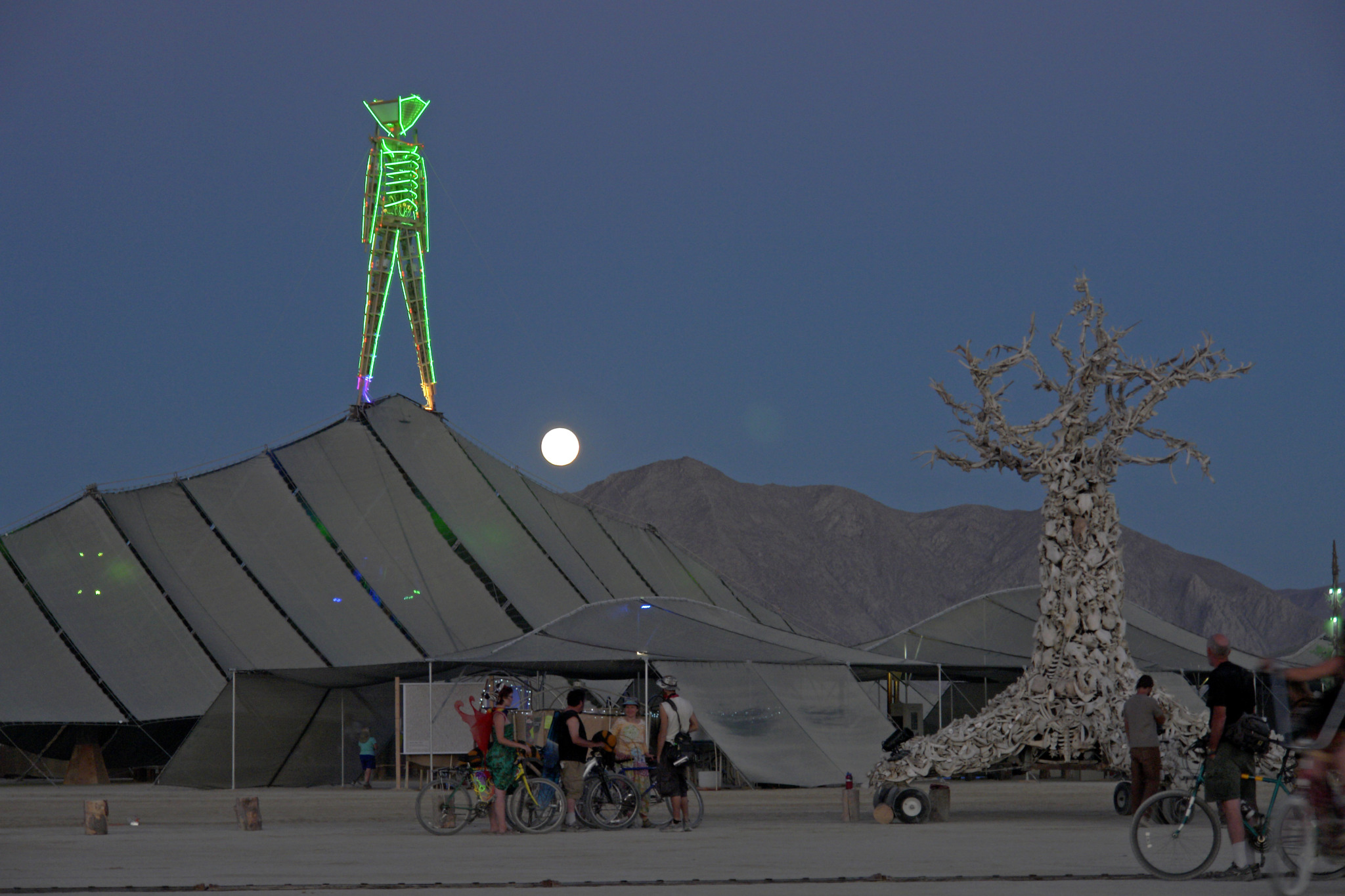
Building a Sustainability Basecamp at the 360 in Gerlach
Storing and staging infrastructure, art, and mutant vehicles close to the playa will reduce fuel use associated with transportation. To facilitate this, we’ve been busy converting the 360 into a sustainability basecamp that will offer participants year-round storage. In spring 2022 we’ll be opening a space for big art builds and other projects. A more developed makerspace is in the works for spring 2023. Subscribe to the JRS to learn about opportunities to get involved in Gerlach and the 360.
- (Photo by Molly Starkovich)
- (Photo by John Curley)
- (Photo by John Curley)
- (Photo by John Curley)
Take yourself on a 360 virtual tour of Fly Ranch, Gerlach, and Black Rock Station.
Prototyping Permaculture and Regenerative Infrastructure at Fly Ranch
At Fly Ranch we’re making headway on our goal to produce public benefits as an agricultural site with regenerative cycles for food, water, power, shelter, waste, and air. Find out how YOU can participate in activities and volunteer at Fly Ranch.
The LAGI 2020 Fly Ranch Design Challenge resulted in 185 proposals. Fifty-two were shortlisted. Jurors chose 10 finalists to build prototypes on Fly Ranch between May 2022 and November 2023. One of the finalists, Ripple, is a station for regeneration of native biodiversity and ecological knowledge, which will become an educational space for gatherings, workshops, and projects. Support Ripple here.

Composting and Waste Stream Recycling
We’re rolling out a year-round composting and multiple waste stream program for our properties in Gerlach. Thanks to an ancient method called Bokashi Fermentation, we’re using food waste to enrich the desert soil at Fly Ranch and the 360 — and yes, we will be growing food gardens.
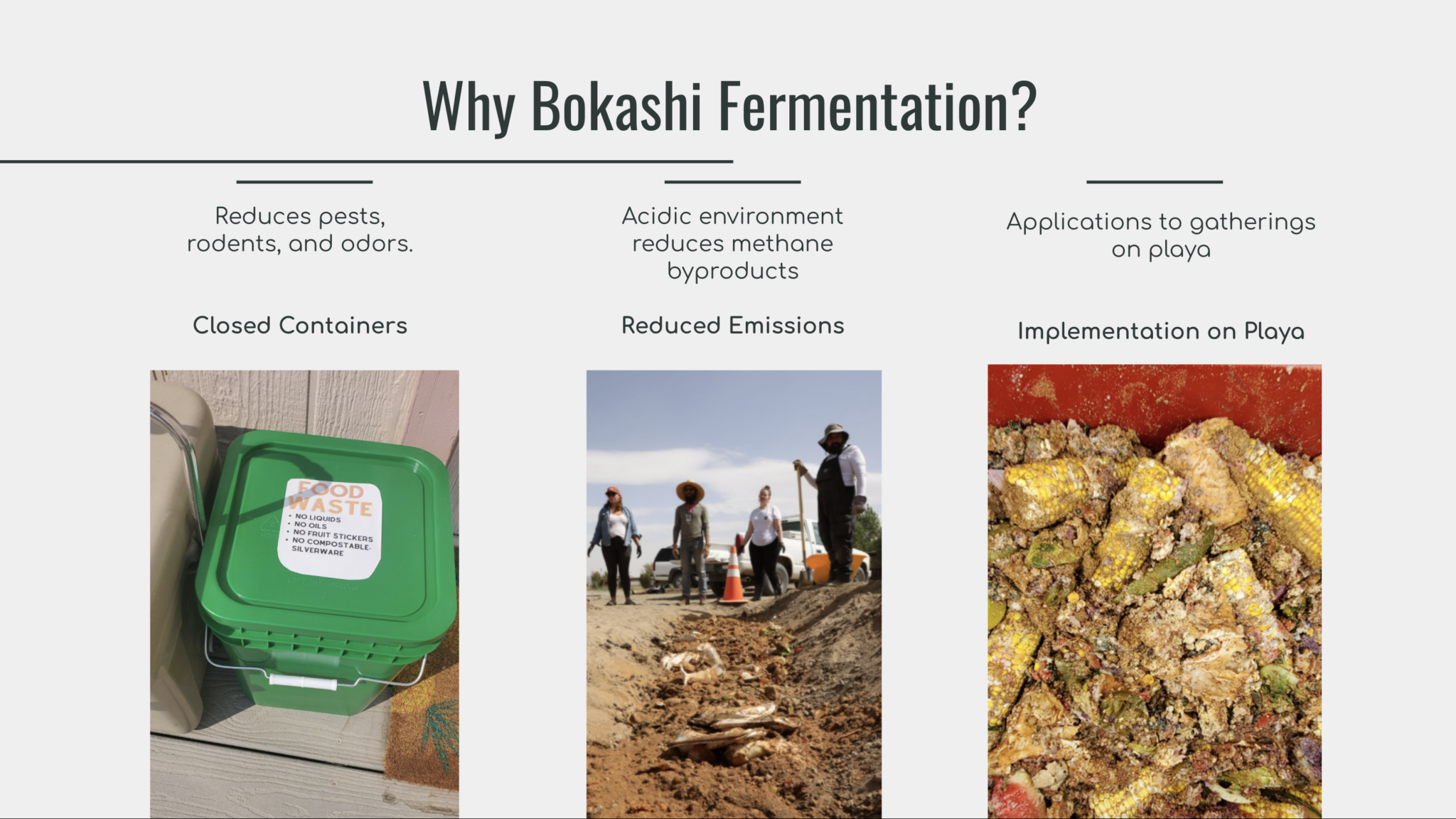
What YOU Can Do
Here are just a few of the ways you can make your camp, your art, and your experience in Black Rock City 2022 lower-impact and more environmentally sustainable. While the task may seem Herculean, the Communal Effort of tens of thousands of Burners will make a tremendous difference.
YOU can be part of shaping and supporting Black Rock City’s sustainability work. Tell us what you’re interested in and how you’d like to help by filling in our Sustainability Contributors Form. Or drop our Sustainability team (sTeam) a line at sustainability@burningman.org.
Share Knowledge in the Green Theme Camp Community (GTCC)
GTCC is a group of stewards designing the future role of theme camps in making Burning Man sustainable and regenerative. This year in Black Rock City, GTCC will be prototyping Burner Leadership Achieving Sustainable Theme Camps (BLAST), a LEED-style rating system to help theme camps go green. Fill out this form to add your camp to BLAST for 2023. Keep an eye on the GTCC website for upcoming events, including one at the Gerlach Workforce Development Center (GWDC) in May 2022 where you can learn about sustainable event design patterns; email gerlachwdc@burningman.org to learn more.
Consolidate Travel and Transportation
By planning in advance to share resources, consolidate infrastructure, share rides and take the Burner Express, you will help decrease traffic and greenhouse gas emissions. Remember that lightening your load improves fuel efficiency, and fewer vehicles in BRC means more space for art, community, and interactivity.
Offset Travel With Carbon Removal
Whether you drive or fly into Black Rock City, Burning Man Project’s Sustainability team recommends offsetting your carbon impact and supporting organizations that use legitimate carbon dioxide removal — Project Vesta and Climeworks.
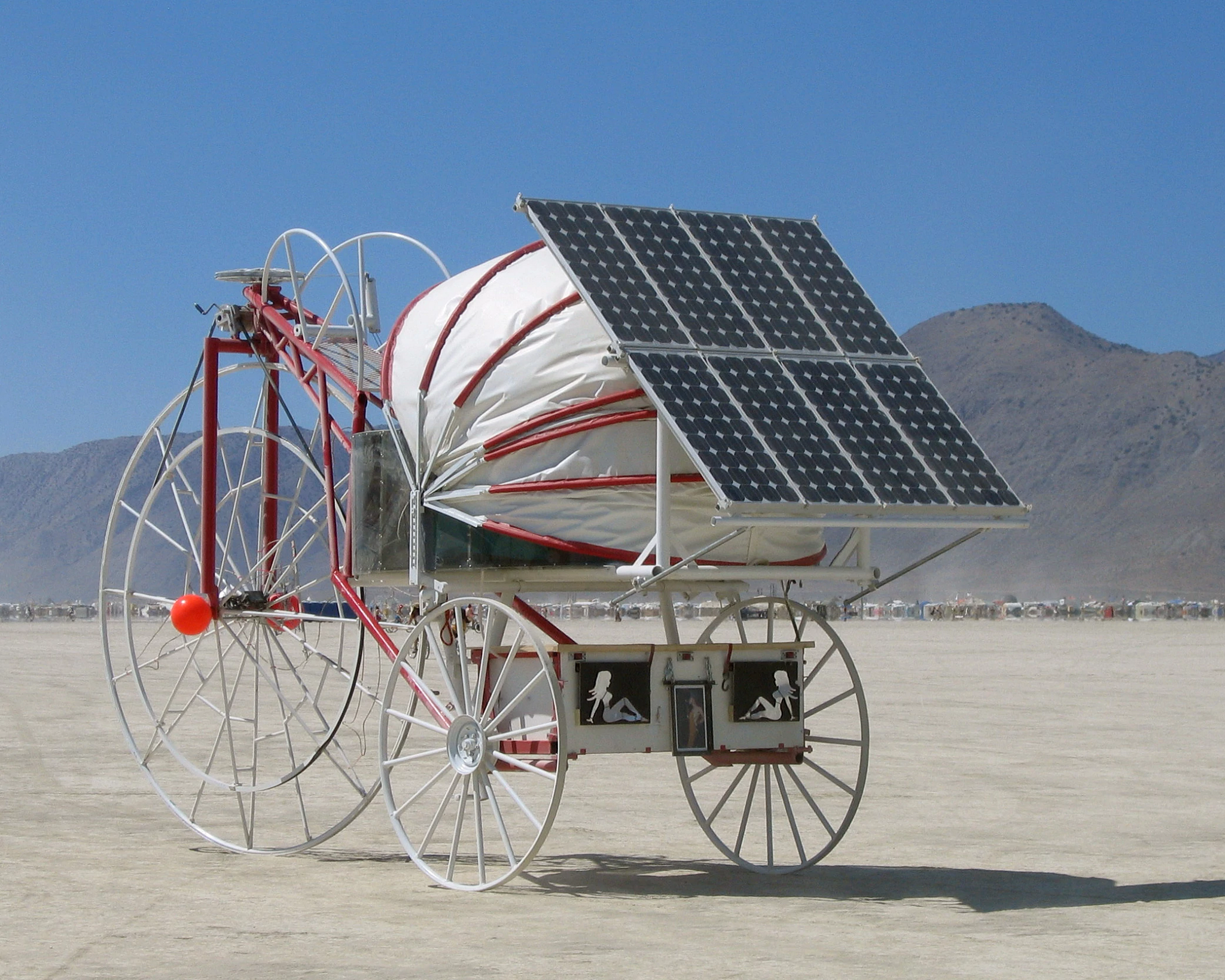
Pool Resources With Your Neighbors
Sharing resources with your neighbors is an extremely effective (and friendly) way to minimize your environmental impact and cut costs. This year Placement will let you know in advance which camps will be nearby, giving you time to say hello and plan to pool resources such as generators and fuel, refrigeration, potable water, water disposal, transportation, and storage. Search for like-minded collaborators in the Spark Classifieds.
Consider Your Waste Stream Pre-playa
Planning ahead to decrease the amount of waste you produce in Black Rock City is one of the most important things you can do to shrink your environmental footprint. Here are some handy tips:
- Meet with your camp or crew to come up with a plan for reducing waste.
- Re-use and repair material, infrastructure, and supplies.
- Choose carefully what you buy and re-use whenever possible.
- Quit using single-serving plastic bottles for water and other beverages.
- Remove and recycle packaging before you hit the road to Black Rock City.
- Plan ahead to recycle and dispose of waste when you leave Black Rock City — see our Leave Nevada Beautiful campaign for details.
Reduce Your Fuel Consumption on Playa
Do you really need to run that generator all night? Where could you replace fuel-consuming technology with renewable energy? We recommend meeting with your project or camp to do an energy audit as a way of understanding how your camp uses fuel, and what kind of learning curve or expenses may be required to help you become more fuel efficient and adopt renewable technology. Subscribe to the BRC Utilities Greener Power Newsletter for tips and tricks on creating efficient power grids and reducing your fuel consumption.
Flip Your Camp or Art Project to Solar Power
For many, the transition to solar won’t happen overnight — it will involve costs, new infrastructure, and a learning curve. For those who can start to make the switch, there’s no time like the present.
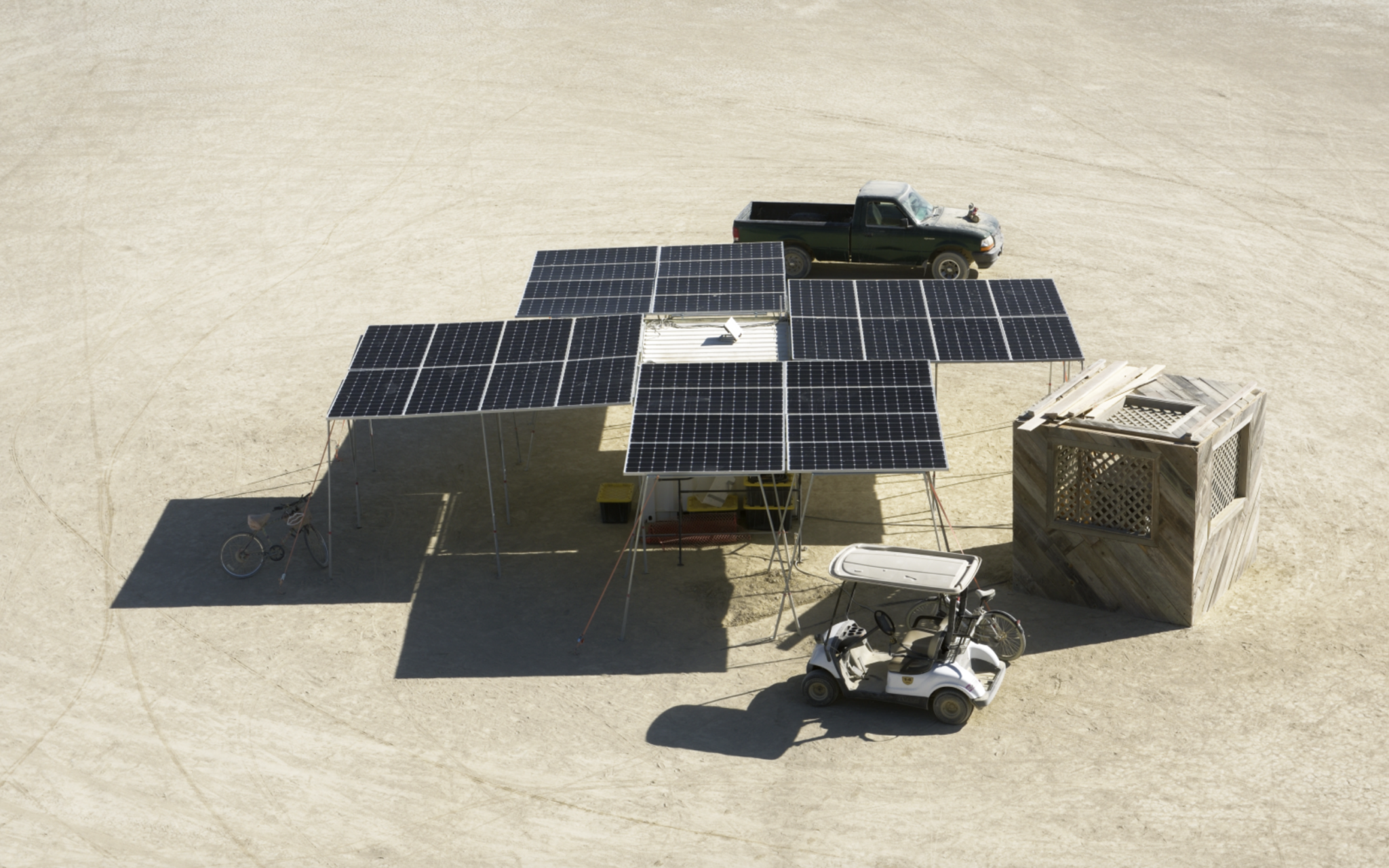
Here are some resources in Burning Man Hive to get you started (join for free using your Burner Profile):
The Renewable Energy Community is a gathering point for the renewable energy community within Burning Man culture.
The Renewables for Artists Team (RAT) helps artists switch from fossil fuel to solar and wind. Follow RAT’s Hive courses Solar Powered Art on the Playa and Solar Power 101, and join their weekly meetings. In May 2022 RAT will be offering in-person courses at the Gerlach Workforce Development Center (GWDC); email gerlachwdc@burningman.org for details.
Store Infrastructure Closer to the Playa
Storing your camp, art, or mutant vehicle closer to the Black Rock Desert will dramatically reduce fuel consumption. There are a handful of storage facilities located in Empire and Gerlach. In 2022 the BRC Storage Program will be moving to the 360, where we’ll be opening up our storage capacity for the first time in five years. We’ll be offering containers and container spaces, and accepting trailers, art, and mutant vehicles.
Join Quarterly Ecosystem Activation Calls
Join quarterly Ecosystem Activation Calls, which explore practical approaches to creating a more regenerative and sustainable future. Of particular interest, the Carbon Dioxide Removal call shares how we’re meeting our “Be Carbon Negative” goal and introduces projects we’re excited about. Subscribe to the BWB Newsletter to learn about the next call.
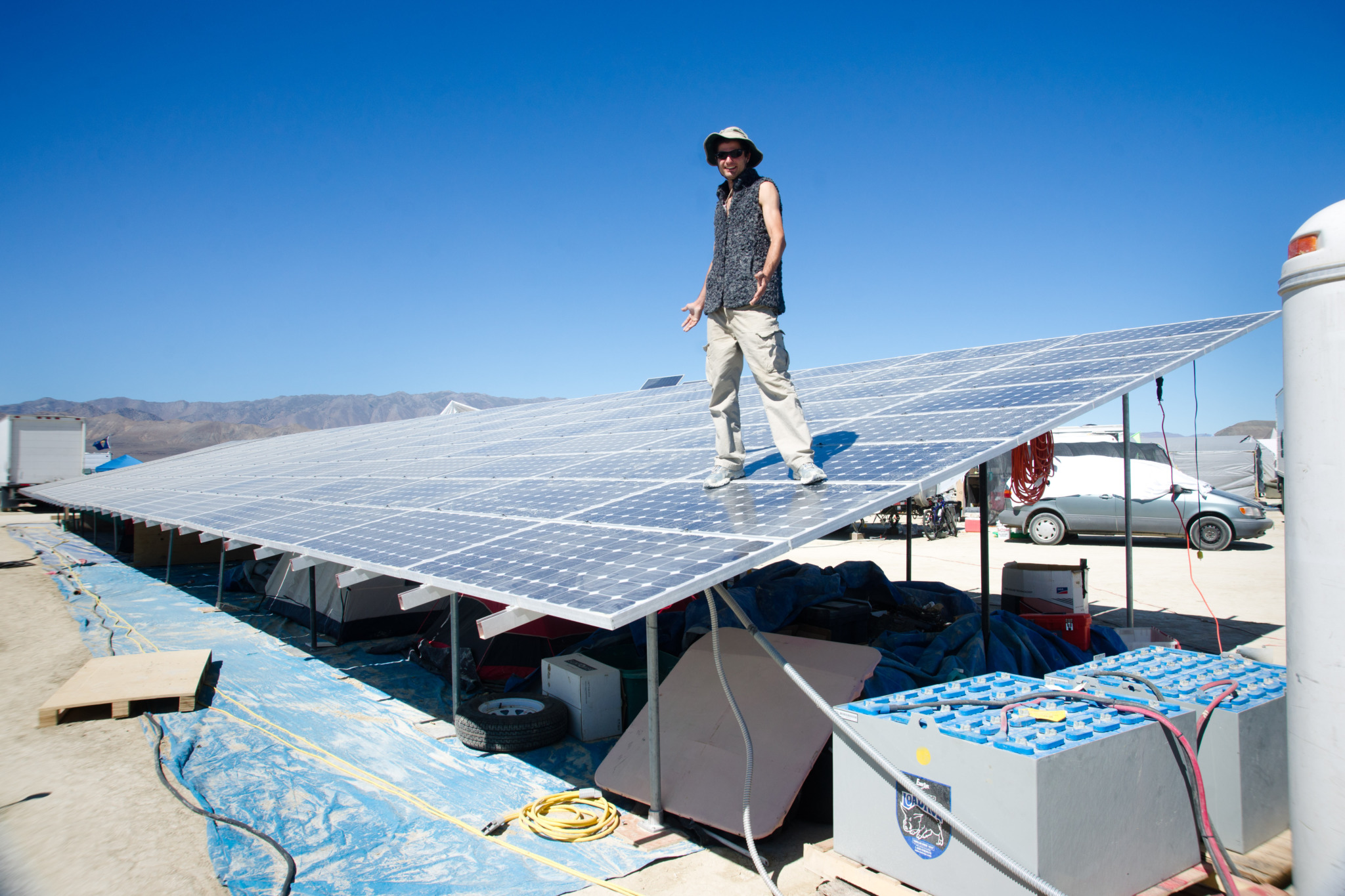
Let’s Do This!
As Burners, we’re accustomed to devising new solutions to complex challenges. Environmental sustainability may be our biggest collective challenge yet… not just as a global community, but as a species. We need a paradigm shift in our relationship to the planet. We believe Burners have a pivotal role to play. The future of our survival begs us not to ask, “How can we afford to do this?” but rather, “How can we not?”

Cover image: Earth Guardians, 2010 (Photo by Steven Fritz)
Virtual 360 Gerlach tour created by Steve Tietze @ibareitall on Instagram

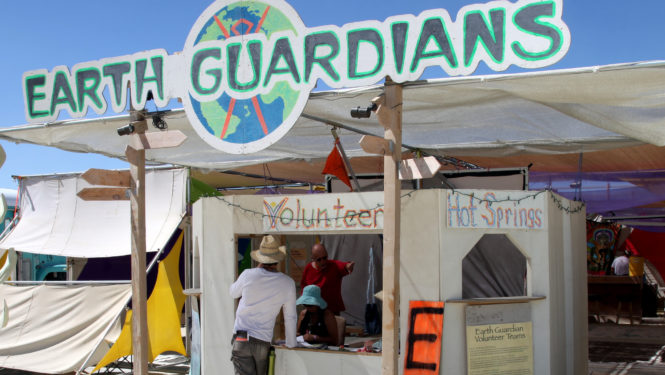
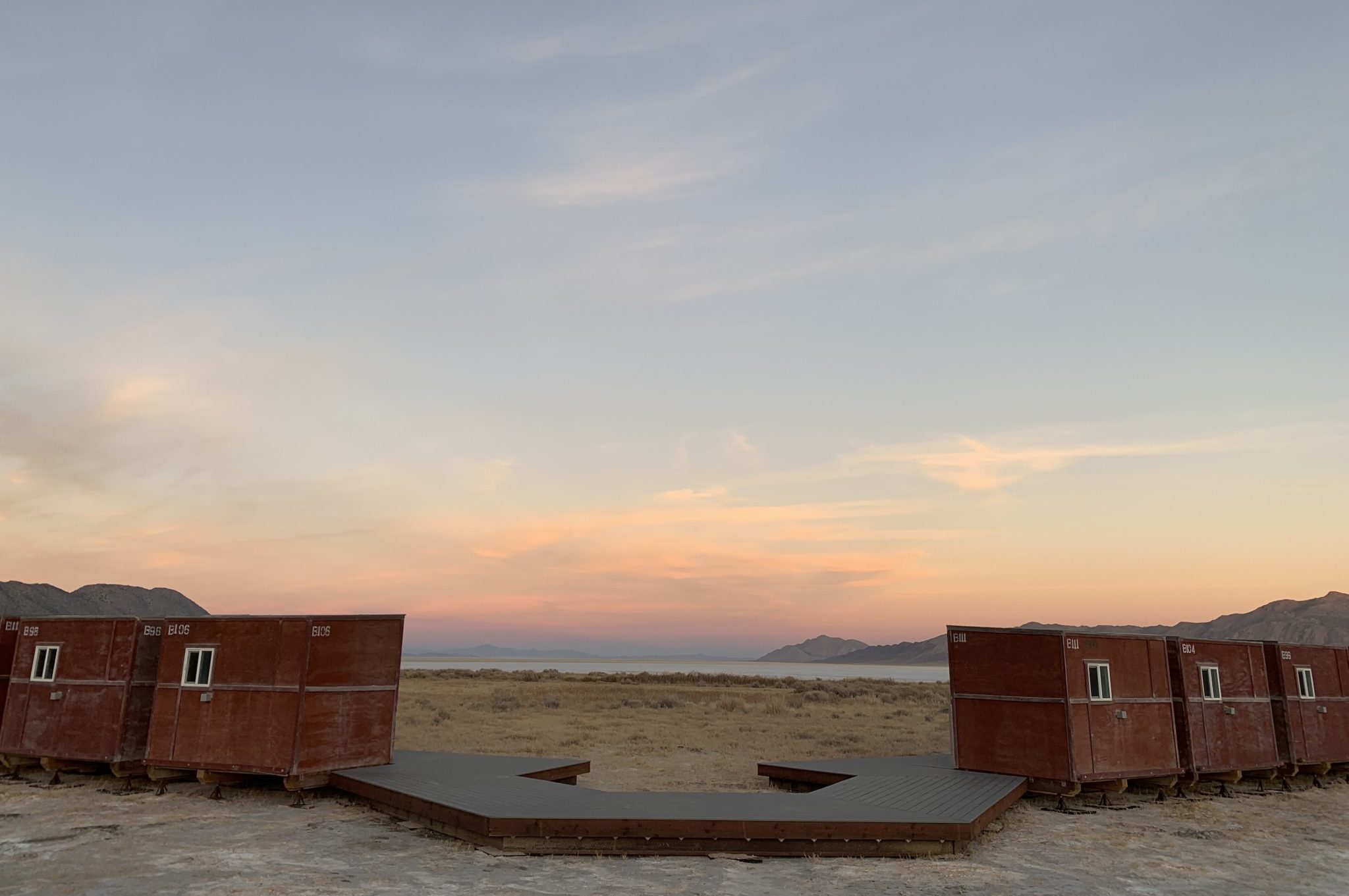
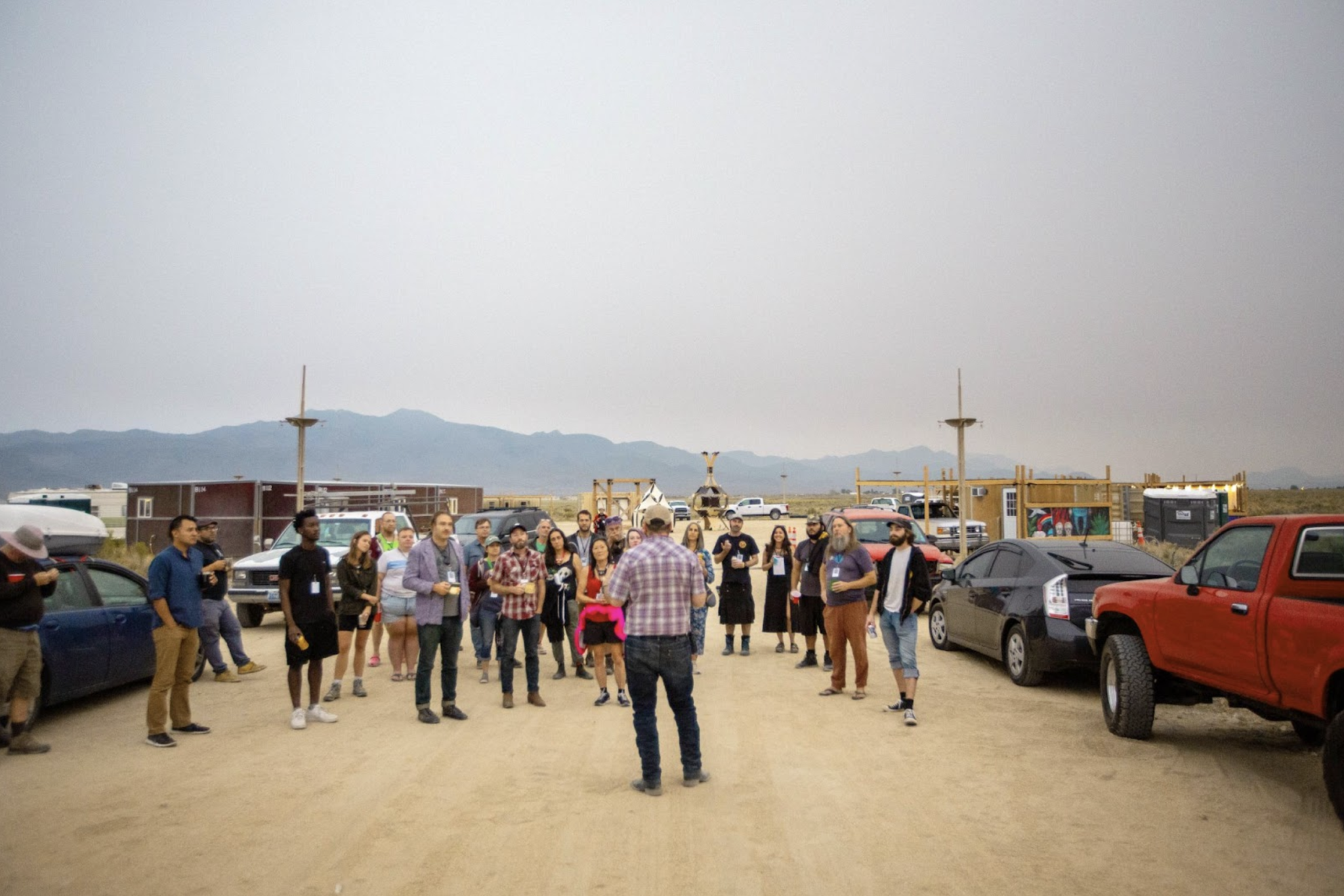
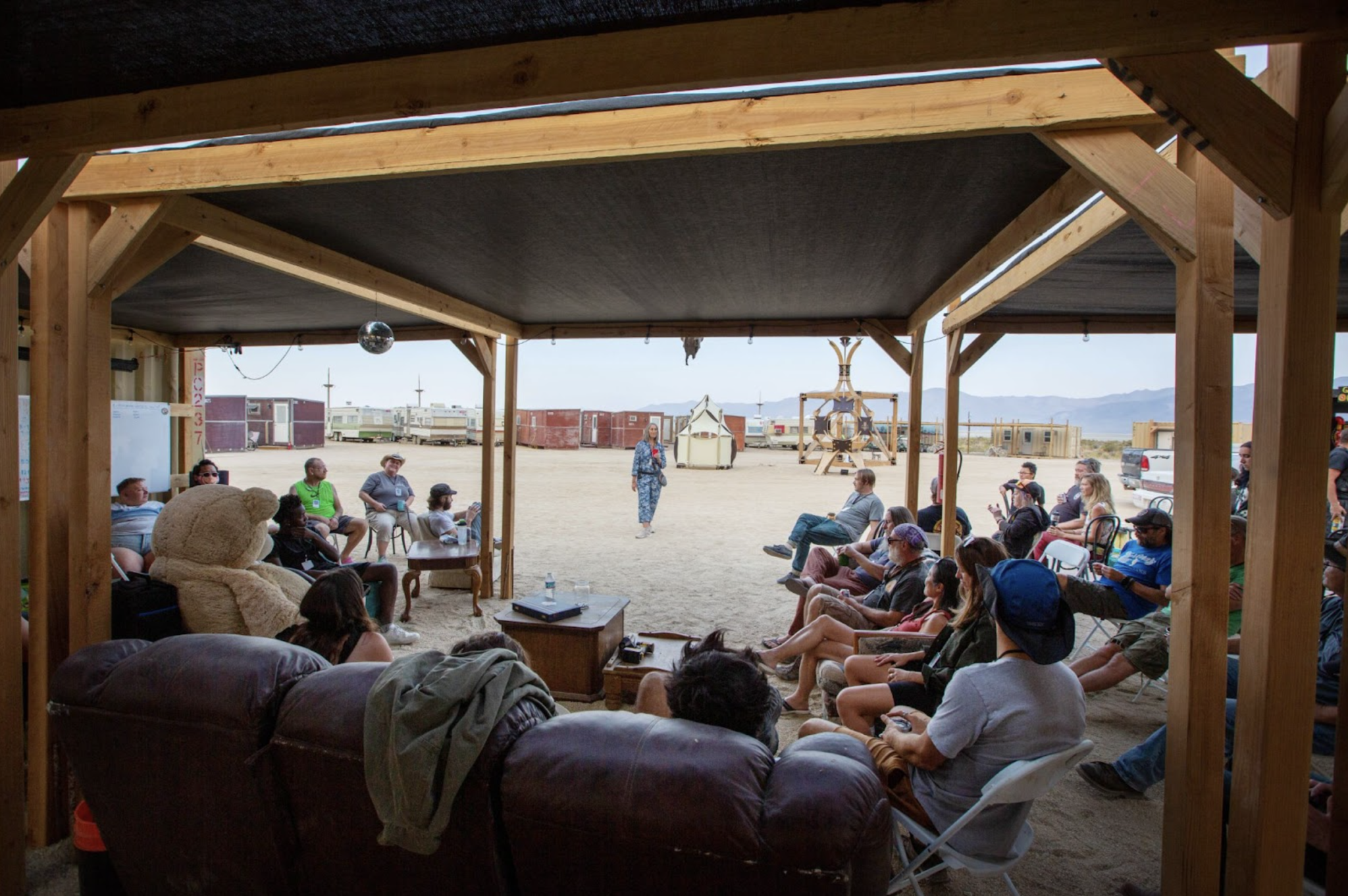
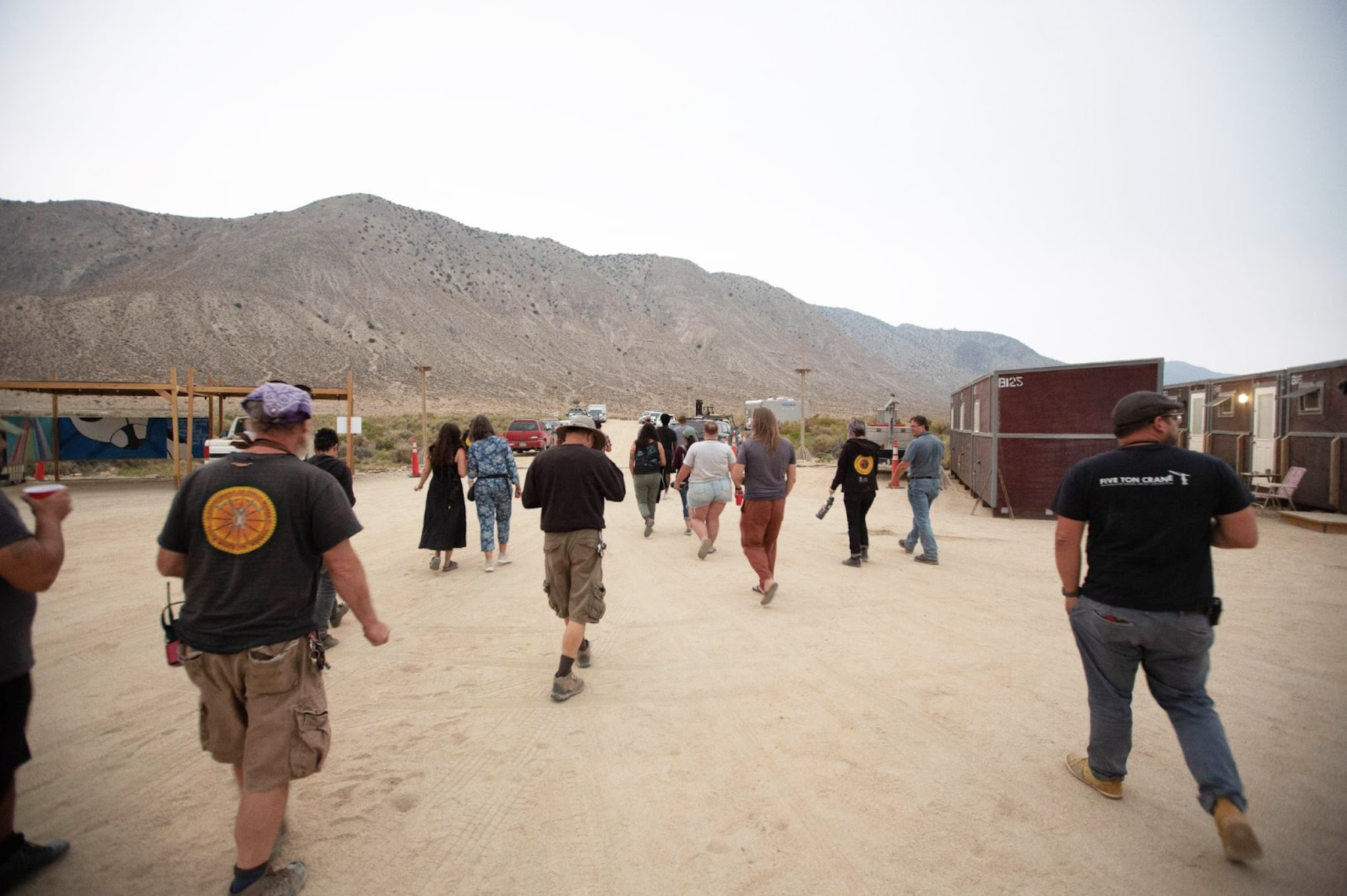
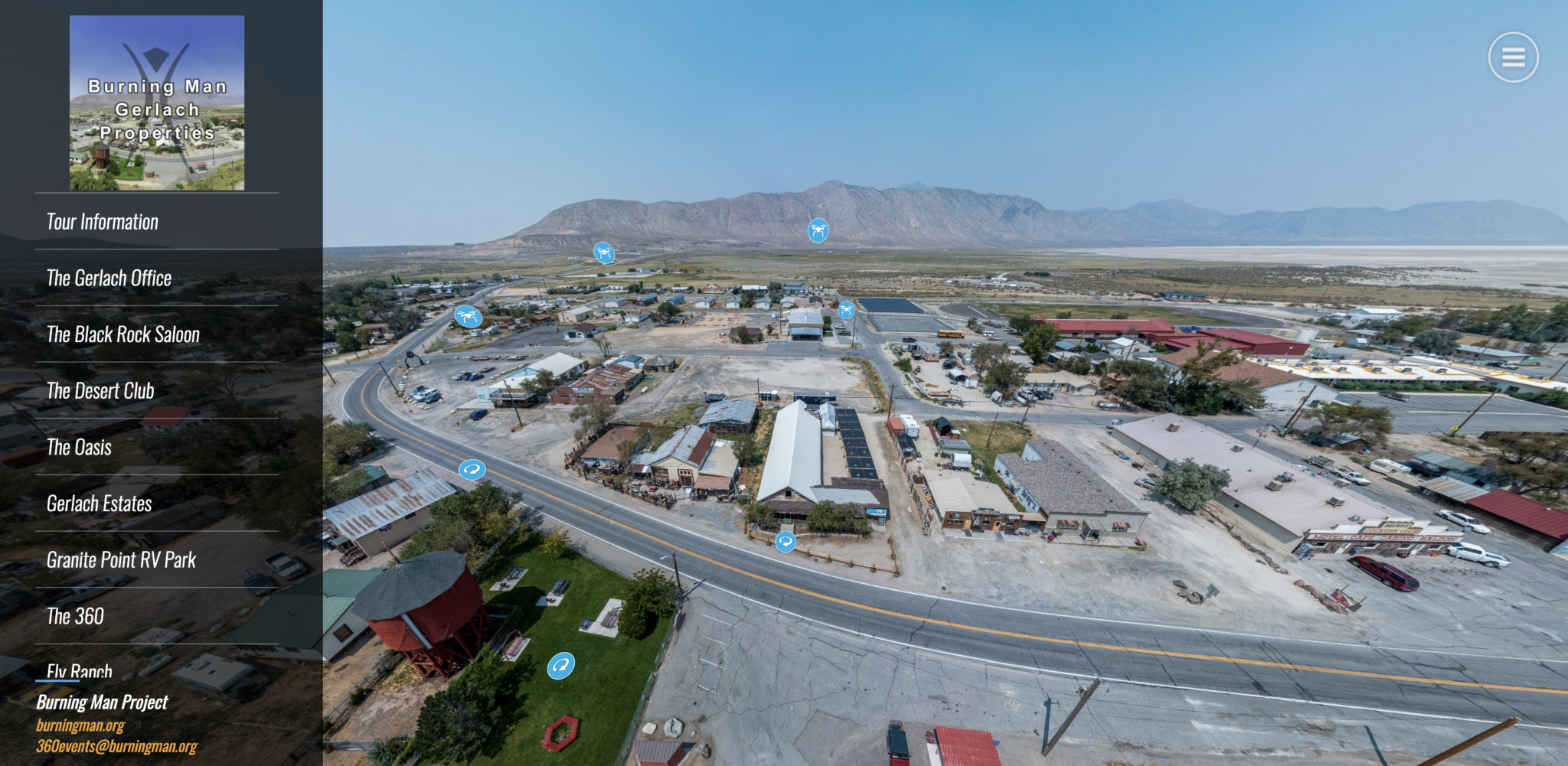
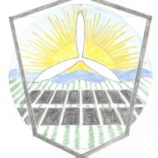

Reminder: Burning Man Project has a responsibility to maintain this space for the benefit of all participants, to ensure that comments serve to enhance the experience of our visitors, rather than cause harm. While spirited conversation is welcome, unruly and rude behavior is not. Posts that are harmful to others or run counter to the spirit of civil discourse may be removed.
Please review our COMMENT POLICY here, then comment with care: https://journal.burningman.org/comment-policy/
Report comment
Do you know if anyone has taken a stab at estimating the total amount of electrical power that is generated by fossil fuels burning generators during the event (for infrastructure, art, camps, etc.)? And the same type of estimate for actual needed power (since generators produce a lot of electrical energy that may not be fully utilized)? It seems like this is something that needs to be pinned down to estimate the amount of solar panels and batteries capacity needed to replace all of the generators. Also, is anyone discussing the use of wind generators since there’s a lot-o-wind out there? Can you provide more information about the “utility scale fixed solar array that is currently in design”? I’ve been thinking for some time that there is plenty of room on the south side of the city east of the gate road where a large solar array, rows of wind generators and batteries could be set-up to power the entire city.
Report comment
Hi Scott! Thanks for these good questions. We have been evaluating the power produced by diesel generators during the event and there is certainly excess power generated. We will learn a lot this year as we prototype solutions and capture data to continue to improve our energy efficiency and find effective technologies to reduce our use of fossil fuels to run the city. You can look forward to
more details around the plans for a utility scale solar array before long! 2022 will be a huge year for learning, testing, planning, and developing systems for a more sustainable BRC.
Report comment
Thanks!
Report comment
buy a solar generator and panel and start plying with it, Right Now! – lights, boom box, powered cooler, etc. – run times, and re-charge times. And when its time for Burn prep, then you’ll know what you need.
Report comment
I have one more question about this and it is how much electrical power do the camps REALLY need? I ride by many camps at night that have bright lights on everywhere, noise blaring, generators spewing out pollution and no one is at home. Seems a bit excessive, doesn’t it? I think we also need an energy conservation plan that should be a part of your efforts too. I camp alone at walk-in and my power usage consists of a chargeable battery I use to recharge my camera batteries and I use one battery powered LED lantern (yes, it’s a $20.00 Coleman)! Except for people with disabilities, the EMS operation, and people who are required to work in office spaces I think the use of generator powered air conditioners should be banned. That should help motivate people to go renewable. For me this really gets at the resource intensive excesses and waste Burning Man is known for that many call hypocritical.
Report comment
Hi Scott, I’m like minded on your anti generator view. Running Air Conditioners on solar is a very large system, heavy and expensive. I believe every journey begins with an easy first step. My suggestion, promote a single PV panel eBike battery charger. Thousands of Burners now use eBikes, most then have to run their gen for hours to charge their eBike battery everyday. Running your eBike off the sun is a $600. system (my components cost) BM could inspire participation by incentivizing a placed neighborhood for solar eBike charging Burners.
Report comment
That’s really interesting. Fly, out of curiosity, what kind of eBike do you have, and what are the basic specs of your solar system to charge it. Lastly, how long does it take to charge?
Report comment
I had solar at my 1st burn in ’98, a little panel and a battery charger, in’00 built my own solar generator (solar power in a milk crate) I now have 2 camping solar generators ( the new ones are just TOO convenient), in ’06 I added a Sun Oven (trashed after 11 Burns), in ’19 used a GoSun solar cooker, in ’09 built my own camper and added a Natures Head Composting Toilet (still going strong), project for next year – a homemade Gypsy Vardo (they’re SOOO Cute!)
Report comment
This is awesome and exciting info. Our camp will definitely submit info to the Sustainability Contributors Form, participate further in the GTCC, and considering applying for BLAST.
Many of the ideas brought up mirror what we’ve been discussing and considering internally. Foremost, that sustainability is not simply a transition to solar; transportation plays a huge role. The combo of storage at 360, and the potential of expanded BXB service to some or all of build week appears to be a high-impact change on its own.
There are a few discussion points of importance that I think were omitted: While city and org solar mega-builds are exciting, at the individual and camp-level, we want to remain sustainable, conscious consumers. It’s important to buy pre-owned solar whenever feasible, and have a plan for utilizing camp solar and battery setups throughout the year (personally or in your community). For a mid/long-term vision – using EVs for bi-directional charging and energy storage both improves carbon emissions in transport, as well as provides an energy storage option in BRC that sees year-round use and positive impact beyond the City.
Report comment
Solar is great in the desert, but it’s extremely important that all the panels and ideally batteries are put into an on-grid solar system the other 50 weeks of the year. If you buy solar panels only for camping you seriously would be better off using a diesel generator. On-grid, panels reduce demand for fossil fuel. Off-grid most of their power output is wasted when in use, and all of it is wasted if they are in storage. Solar can be a convenient way to get power off-grid, but it’s convenient, not green because you throw away the power when your batteries are more than about 70% full.
Report comment
Black Rock Desert is better for us being there. Our community has made it cleaner and the surrounding mountain ranges are more eco friendly. We have introduced new forms of biodegradable bags that actually increase the fertility of many native species.
Report comment
“In 2021, Burning Man Project conducted a detailed emissions inventory to establish a baseline for Black Rock City’s carbon negative goal.”
Is this emissions inventory published and does it include methodology and assumptions? It would be ideal if individuals and camps could see this so that they could choose to adopt for their own emissions inventory. This could be shared along with steps taken and create a best practices effort that we could all leverage from.
Report comment
Comments are closed.